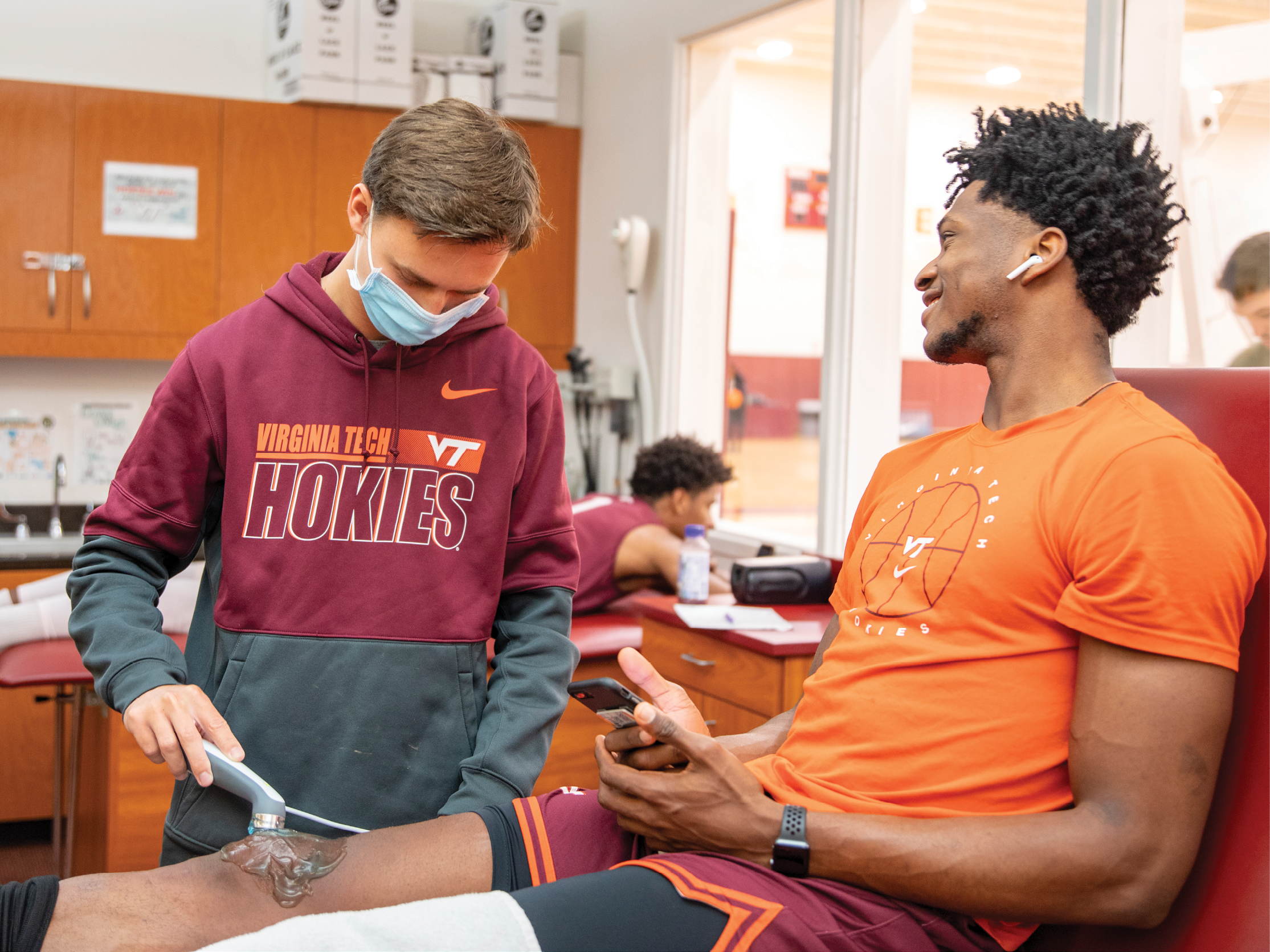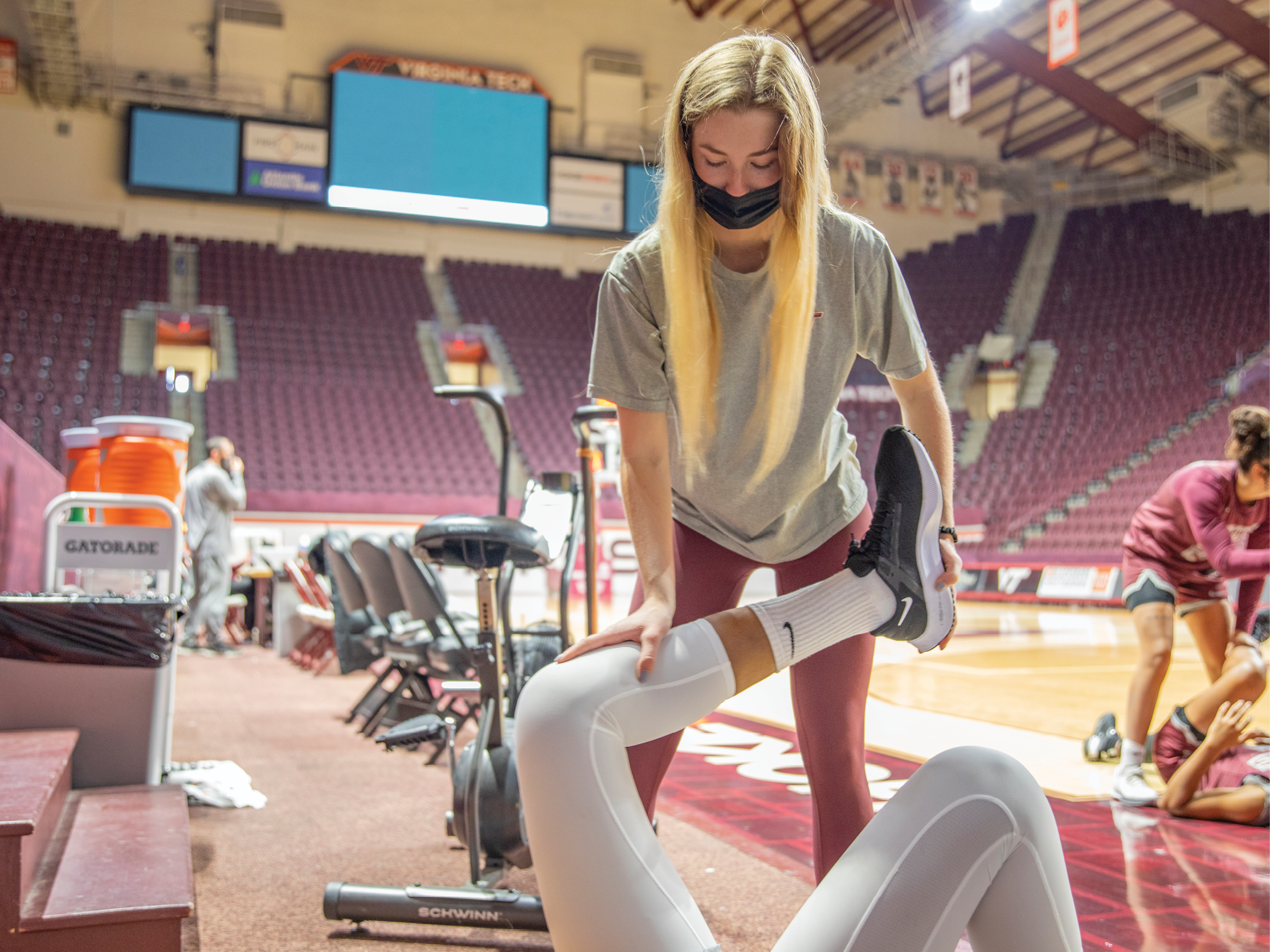All the way to the three!
Avi Pelly looked up at the whiteboard as she walked into the football practice facility, ready to handle all the tasks of the day. Make smoothies for each player’s specific dietary needs? Check. Get the appropriate snacks stocked? Check. Prepare the football fuel bar? Check. No Hail Mary is needed here.
Carly Harris, the director of football sports nutrition, created the nutritional plan because every single thing that’s put into the players’ bodies impacts performance on and off the field and Pelly helps implement that plan.
“Everything we give them — even the snacks — makes a difference in the athletes' performances,” Pelly said. “I’ve been able to learn a lot from Carly about what to feed the athletes, when timing of specific snacks and meals is vital.”
In Michelle Rockwell’s (’97, ’99, ’19) first-year course on sports nutrition for HNFE students, Julia Whaley, a senior from Broadlands, Virginia, learned about what to eat pre-and post-exercise.
“I learned the timings of what should be eaten, when,” Whaley said. “An hour or more before practice and you should have more complex carbs, like oatmeal or bread. But if it’s right before practice, you want something that digests quickly – like fruit gummies.”
Sometimes, something tasty can still be nutritious. After a win, Pelly makes watermelon slushies for the players – something she first made over summer camp – as a reward. She said the players loved it over the summer and kept asking for it.
“I’m just happy to be a part of this,” said Pelly, a senior from Manasquan, New Jersey. “It takes a village to make the players successful. It makes me appreciate the work that’s put in by everyone that is a part of the team. I’m lucky to work with such amazing people.”
Elsewhere on the field, Claudia Putman, a senior student athletic training aide from Berryville, Virginia, worked exclusively with the defensive line group, performing taping, wrapping, and casting of her position group.
“In the training room, we do rehab treatment, such as modalities, stretching, and rehab anytime somebody is injured,” Putman said. “We help them with that by walking them through a rehab plan created by the athletic trainers.”
During the 2020 season, Putman worked with the team in challenging conditions and had a primary focus on keeping the players healthy.
“It was difficult, but I think that our team did a really good job of making an effort to keep people safe, sanitizing things, and ensuring the overall health of everyone in the program, not just athletes but also myself,” Putman said. “I was able to get hands-on experience instead of being remote. It gave me patient contact as well as human interaction during a highly stressful time.”
Whether dietetics or science of food, nutrition, and exercise, no student rides the bench in this department.

